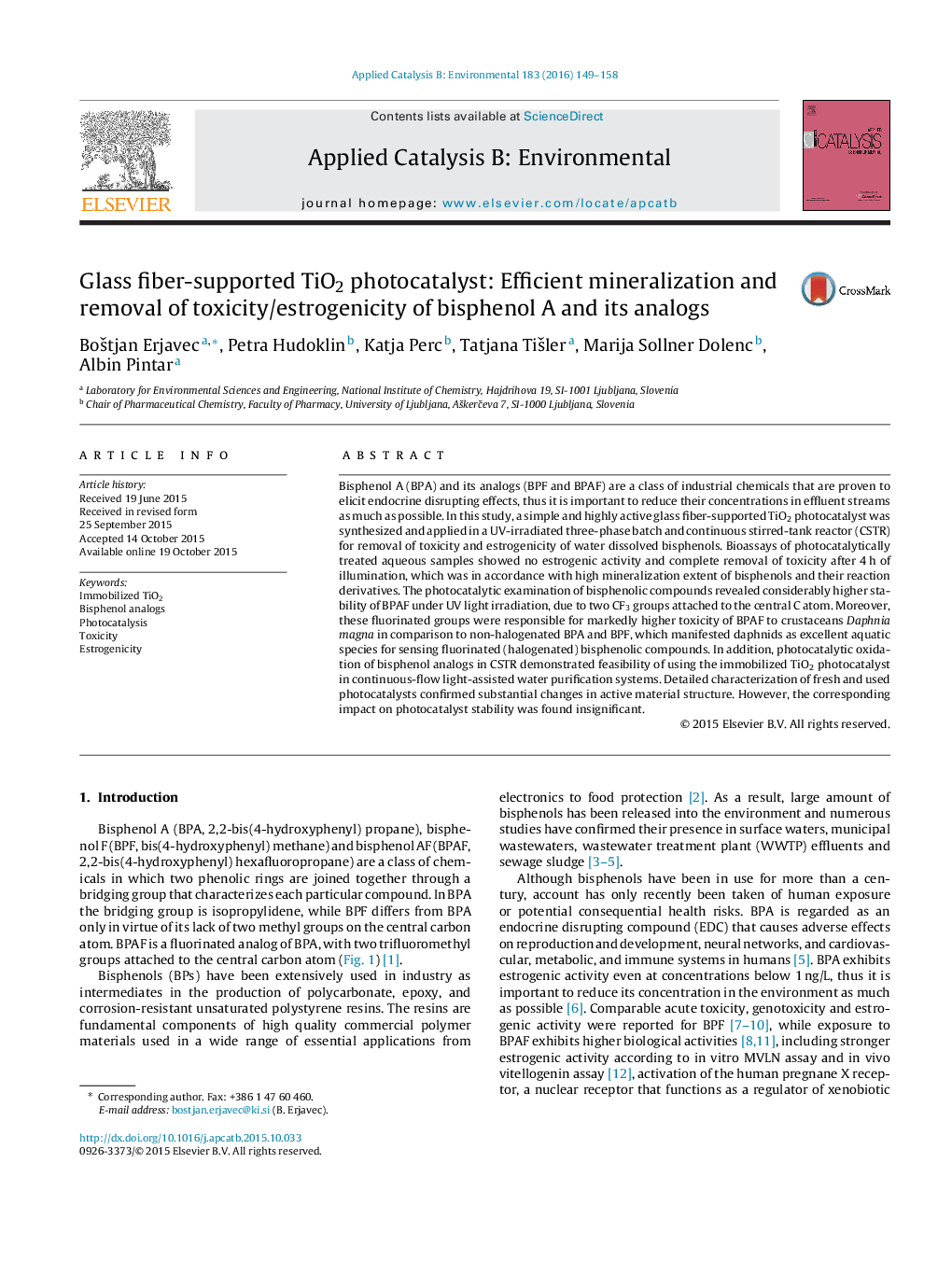| کد مقاله | کد نشریه | سال انتشار | مقاله انگلیسی | نسخه تمام متن |
|---|---|---|---|---|
| 45143 | 46401 | 2016 | 10 صفحه PDF | دانلود رایگان |

• TiO2 photocatalyst was supported by non-woven glass fibers.
• Immobilized TiO2 photocatalyst was tested in UV irradiated batch and CSTR reactor.
• BPAF and its reaction derivatives were found more stable compared to BPA and BPF.
• Complete toxicity and estrogenicity removal of BPA, BPF and BPAF was achieved.
• Crustaceans D. magna were found highly sensitive to fluorinated bisphenol AF.
Bisphenol A (BPA) and its analogs (BPF and BPAF) are a class of industrial chemicals that are proven to elicit endocrine disrupting effects, thus it is important to reduce their concentrations in effluent streams as much as possible. In this study, a simple and highly active glass fiber-supported TiO2 photocatalyst was synthesized and applied in a UV-irradiated three-phase batch and continuous stirred-tank reactor (CSTR) for removal of toxicity and estrogenicity of water dissolved bisphenols. Bioassays of photocatalytically treated aqueous samples showed no estrogenic activity and complete removal of toxicity after 4 h of illumination, which was in accordance with high mineralization extent of bisphenols and their reaction derivatives. The photocatalytic examination of bisphenolic compounds revealed considerably higher stability of BPAF under UV light irradiation, due to two CF3 groups attached to the central C atom. Moreover, these fluorinated groups were responsible for markedly higher toxicity of BPAF to crustaceans Daphnia magna in comparison to non-halogenated BPA and BPF, which manifested daphnids as excellent aquatic species for sensing fluorinated (halogenated) bisphenolic compounds. In addition, photocatalytic oxidation of bisphenol analogs in CSTR demonstrated feasibility of using the immobilized TiO2 photocatalyst in continuous-flow light-assisted water purification systems. Detailed characterization of fresh and used photocatalysts confirmed substantial changes in active material structure. However, the corresponding impact on photocatalyst stability was found insignificant.
Figure optionsDownload as PowerPoint slide
Journal: Applied Catalysis B: Environmental - Volume 183, April 2016, Pages 149–158